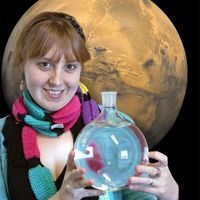Seminar: Searching For Hidden Liquid Water Environments In The Solar System
 The next speaker for the Department of Ecology &╠²Environmental Science Seminar Series will be╠²╠²from the University of South Australia with a seminar entitled "Searching For Hidden Liquid Water Environments╠²In The Solar System"
The next speaker for the Department of Ecology &╠²Environmental Science Seminar Series will be╠²╠²from the University of South Australia with a seminar entitled "Searching For Hidden Liquid Water Environments╠²In The Solar System"Title:╠²Searching For Hidden Liquid Water Environments╠²In The Solar System
When:╠²12:10pm, Friday Septermber 9, 2016
Where: Lecture Theatre G10, Benham Building, │╔╚╦┤¾Ų¼
╠²
Abstract
The identification and characterisation of extra-terrestrial liquid water╠²environments are of high scientific interest. Such environments have the potential to support microbial life, and to develop our understanding of the habitability of planets and moons beyond Earth. The surface of Mars is predominately cold and dry, with any liquid water exposed to the
atmosphere vaporising or freezing on timescales of hours to days. Despite this, both modelling and the recent orbital detection of flowing brines╠²indicate that the subsurface regolith of Mars can support liquid water and environments potentially hospitable to life. Remote sensingŌĆōradar,╠²gamma ray spectrometry, thermal infrared and hyperspectralŌĆō provides information on near-surface water ice on Mars, however our current╠²understanding of deeper ice and groundwater systems is severely╠²limited. In this talk I will discuss some of the remote sensing╠²methodologies utilised to constrain the presence and extent of subsurface water on Mars, with an emphasis on my recent research results. Some of these approaches can also be applied to Earth, providing innovative new methods for the identification and characterisation of groundwater╠²systems in arid environments. A brief overview of a current project to╠²apply these techniques to groundwater in the Lake Eyre Basin will be╠²provided.
╠²
╠²

Newsletter & social media
Join us for a sensational mix of news, events and research at the Environment Institute. Find out about╠²new initiatives and╠²share with your friends what's happening.
╠²╠²╠²
